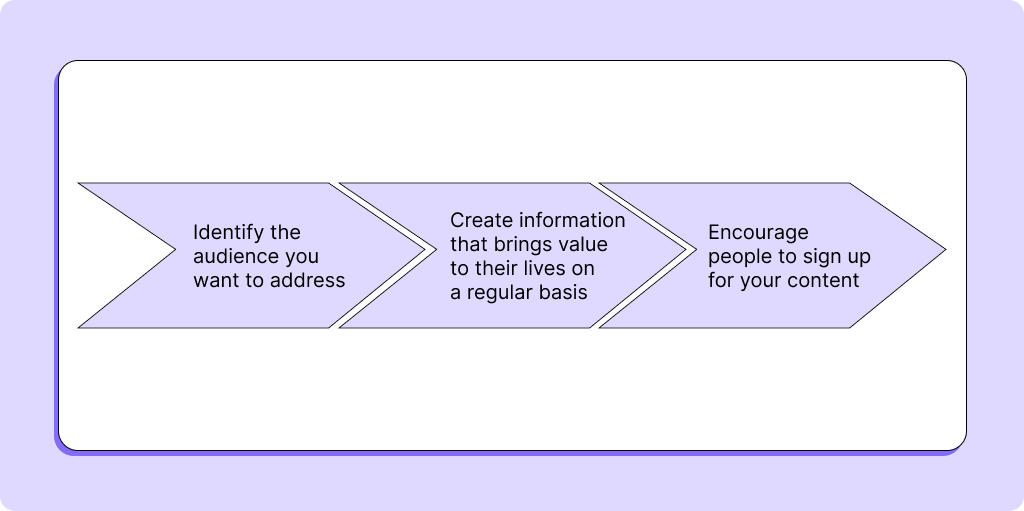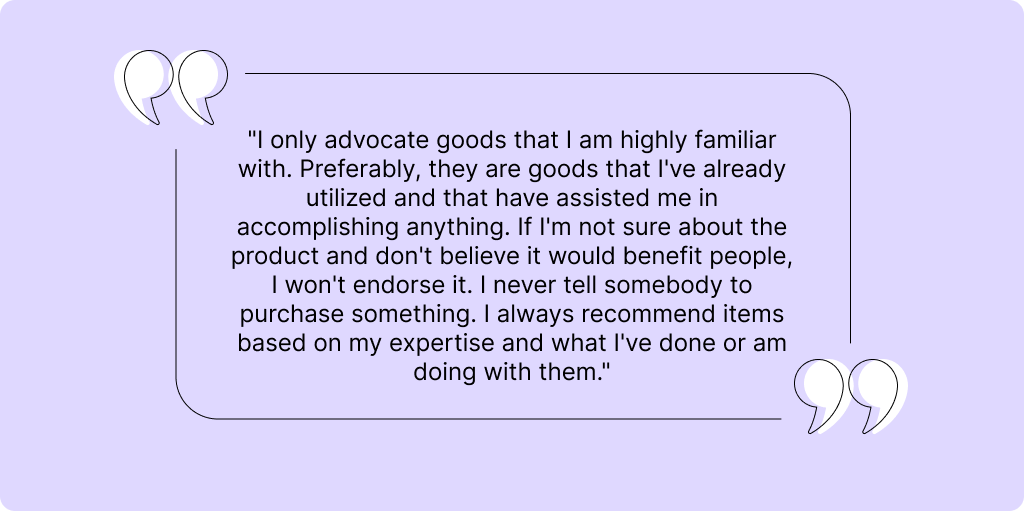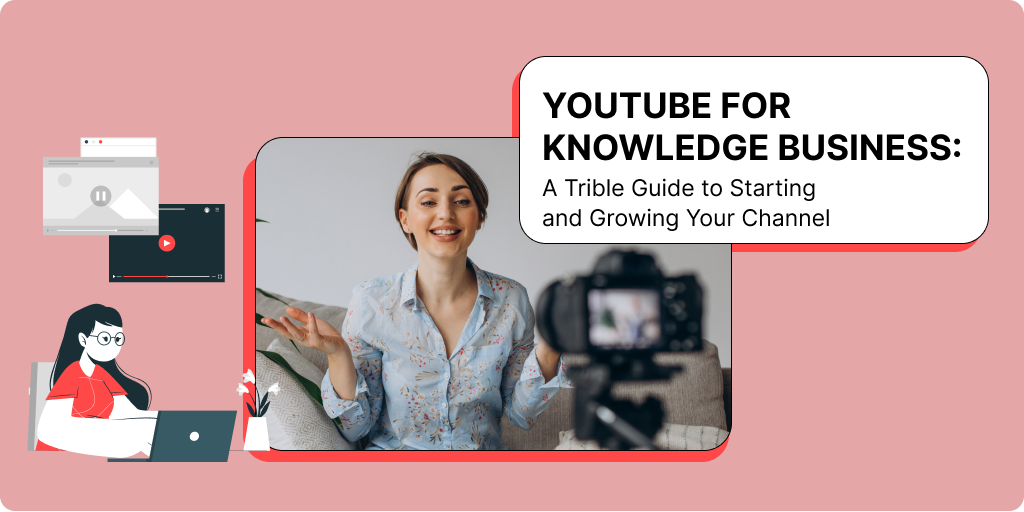You understand the importance of sales as a digital entrepreneur. Even if you have the finest digital product in the world, if it isn’t selling, your company is in jeopardy. To enhance your sales, try using affiliate marketing. Let’s take a look at what affiliate marketing is and how you can get started.
What is affiliate marketing: definition and examples

Affiliate marketing is the practice of selling someone else’s product online in exchange for a fee. An entrepreneur or established corporation, for instance, may have a product or a library of items, either digital or physical. They let people promote and sell their items, earning them a commission on each sale. According to Pat Flynn’s affiliate marketing series, “affiliate marketing is the technique of earning a commission by recommending the product of another individual or firm.”
For instance, you could wish to start out as an online product creator. Instead of investing time in developing a product that may or may not is purchased, you try your hand at marketing someone else’s product. Affiliate marketing has a long history outside of the digital environment as well. Farmers, AllState, and State Farm all offer their insurance plans via independent insurance salesmen or brokers.
These salespeople are not insurance company personnel. They have established themselves as businesses in order to sell insurance on behalf of Farmer’s, AllState, or State Farm. They receive a fee from the insurance company if they sell an insurance policy to a friend or family member. Affiliate marketing is similar, with the exception that sales are conducted online. And the amount of things you may sell as an affiliate is unlimited.
What kinds of items may be offered through affiliate marketing? Anything that can be sold online may be made into an affiliate product. You may become an Amazon affiliate and promote anything Amazon sells while earning a portion of the sale. Check out options like the Amazon tax exemption if you want to get the most out of the platform. You can sell online software or other online services such as hosting services, marketing automation tools, or any other software or technology service. You can market vitamins and nutritional supplements. You may sell physical items. If you want, you can even offer insurance!
The list goes on and on. The aim is to identify affiliate items that are related to your business so that you can start earning money while building your own digital product. Let’s go into the weeds and look at how you, as a digital entrepreneur, may benefit from affiliate marketing. We’ll go through the elements, players, technology, and how to make money as an affiliate. We’ll also look at how you may utilize affiliates to boost your own product’s distribution and sales.
Parties of the affiliate marketing

An affiliate marketing partnership involves four parties: the merchant, the affiliate, the customer, and the affiliate network.
The merchant
The merchant is the person or corporation who sells a thing. They hire affiliates to advertise and sell their items in order to enhance sales. When someone they suggest purchases the merchant’s product, the merchant pays its affiliates a reward.
The affiliate
A person or institution who agrees to sell a merchant’s product to their own audience in exchange for a commission is known as an affiliate. They join the affiliate program and then sell the product to their target demographic. The affiliate employs a customized link supplied by the retailer to identify themselves as the source of the new consumer. This link guarantees that they are given credit for the sale and that they receive a commission.
The consumer
The consumer is the individual who eventually buys the product. They find out about the goods via the affiliate. When they’re prepared to buy, they click the affiliate’s link. However, the customer ultimately purchases the product from the seller.
The network
The affiliate network, like Clickbank or the Amazon Affiliates Program, is a platform. It offers a catalog of items for affiliates to sell. When you register as an affiliate, the merchant will invite you to join their network. If you want to market affiliate items, you may join a network and explore their product pages. In any instance, the merchant must authorize you before you can begin selling.
A list of examples of affiliate marketing
Amy Porterfield
Amy Porterfield is a course presenter, online advisor, and businesswoman. With her podcast and blog, she has amassed a tremendous following of 250,000 subscribers. Amy teaches entrepreneurs how to use their expertise to create online courses and generate money as digital entrepreneurs. Amy, on the other hand, does more than just educate students on how to build courses.
Pat Flynn
Flynn has amassed an ecosystem of businesses that follow his show. They not only buy his classes, but they also buy the tools he recommends as an affiliate.
Copyblogger
By gaining hundreds of thousands of subscribers and selling numerous digital items, Brian Clark, the founder of Copyblogger, developed a multimillion-dollar business. Anything from classes to premium WordPress layouts to SaaS applications is included. The majority of Copyblogger’s sales have come from original products generated in-house or through partnerships. However, they are also an affiliate for marketing products that they utilize on a regular basis. They advertise these associated items with the same zeal that they do on their own.
Michelle Lewis
Michelle uses Hollywood tactics to help CEOs become superstars in their fields. She uses her intimate knowledge of Hollywood (as a past actor) to teach what she knows through her classes, videos, and podcast. As an affiliate, she also offers tools to assist her clients in implementing the ideas she teaches.
Graham Cochrane
Graham, a former audio engineer who now teaches audio engineering, has used online courses to share his skills with other audio engineers. He is also an affiliate who teaches people how to make courses so they may share their knowledge.
How to get started with affiliate marketing as the affiliate
Affiliate marketing is a fast-expanding sector; by 2023, expenditure in the U. S. alone will reach $8.2 billion, up from $5.4 billion in 2017. Furthermore, the business model benefits both the company and its affiliates. In addition to assisting businesses in attracting new clients, it will assist your target audience in locating the best products and services. Your affiliate platform will assist you in creating content and generating affiliate money.
The initial step is to find and register with firms that provide affiliate marketing programs. Then you begin marketing those things to your target market. However, affiliate marketing is not about selling at any cost. It is about providing solutions that your audience can use. With this in mind, you must avoid deceptive and unethical affiliate marketing techniques.
There are several affiliate examples that are not helpful:
- Bad affiliate marketing is distinguished by cheesy, poorly designed websites.
- Online advertisements direct you to websites that appear to be phishing operations.
- People who are advertising items that they have never used before.
- Product-centric material that is essentially a sales pitch.
How to be successful with affiliate marketing
Successful online gurus such as Gary V., Brendan Burchard, Amy Porterfield, Pat Flynn, Andrew Warner, Brian Clark, Joe Pulizzi, and others have fueled the ideal of online business. What distinguishes these individuals? They’ve developed flourishing web companies by consistently developing and providing high-quality content. They attract devoted fans who rely on the content for their jobs, hobbies, or family life. They are, in essence, internet media enterprises.
The idea is to consider yourself as an internet media organization. It’s simple for a digital entrepreneur: the cost of reaching a specific audience with content is close to $0. You don’t have to send out a lot of mail or print a lot of copies. All you have to do is assist your audience by recommending products you know and trust.
“The new media business model and the new marketing business model are precisely the same,” explains Joe Pulizzi in an article for the Content Marketing Institute.

5 steps for successful affiliate marketing:
- Create a small yet viable audience.
- Determine what your target audience needs.
- Find goods that meet those requirements.
- Establish an affiliate relationship with the retailer.
- To market such items to your target demographic, use a soft-sell method.
Minimum viable audience
You have a minimum viable audience when:
- You’re getting enough input from comments, emails, social media, and social media news sites to change and evolve your material so that it better serves the audience.
- You’re naturally building your following through word-of-mouth, email forwarding, and social media sharing by current audience members, as well as earned media.
- Beyond the free education you’re delivering, you’re gathering enough knowledge into what the client needs to solve their issues or meet their goals.
How to build your minimum viable audience?

This is how you can build your minimum viable audience:
- Identify the audience you want to address.
- Create information that brings value to their lives on a regular basis (in their career, their hobbies, or in their family life).
- Encourage people to sign up for your material, whether it’s your email newsletter, podcast, or YouTube channel. Or any combination of the foregoing.
The key to attracting a devoted following is to establish trust and authority. Then, determine what your audience requires and provide it to them. Do you provide information to assist beauty salon owners in improving their company operations? Give them all the knowledge and suggestions they need to start a successful salon company. Do you create content for cyclists who are preparing for races? Give them advice on how to strengthen their legs. Teach them how to select the proper bike. Give them a useful race-day strategy.
Do you make YouTube videos to assist aspiring software engineers to get freelance work? Give them as much knowledge as they require to advance in their careers. Assist them in finding lucrative development jobs while building their credentials.
Understand what your followers need
Once you’ve established your minimum viable audience, you’ve effectively created a feedback loop. You may learn what your client is likely to buy by reading comments on your website or social media postings, reactions to your email newsletter, data on which material receives the most hits, and other sorts of feedback. Brian Clark was able to have a successful debut every time he delivered a new product to the Copyblogger audience because of the audience feedback loop. It’s also the topic of Joe Pulizzi’s book Information Inc., which will be re-released with additional content in April.
Think of the products that fulfil those needs
You’re ready to identify great affiliate items after you know what issues, needs, frustrations, and ambitions your audience has. You’re seeking goods that will solve their issues, satisfy their needs, and alleviate their frustrations. Begin with goods you use frequently. Next, join affiliate networks to look for further chances.
Create affiliate partnerships with merchants
Many retailers have affiliate programs on their websites. They will supply you with customized product links that will attribute sales to you when you join up and are accepted as an authorized affiliate. You may advertise their items on your own website by using these links.
Use the soft sell to advertise these products to your followers
Pat Flynn defines affiliate marketing as a soft pitch pipeline. The pipeline begins with a strong relationship with your target audience. The best affiliate items will meet the demands of your target audience and solve the issues you identified in Section 2 above. However, don’t advocate items only to sell them. To maintain your audience’s trust, they must see that you have successfully tested the product themselves. As Flynn put it:

A firm pitch should always be avoided. Avoid anything that will make your viewers uncomfortable. Discuss your experience with the product, what it did for you, and why you like it so much. Then provide them with your affiliate link so they may purchase the product.
Offer a bonus system
This is an excellent approach to guarantee people buy through your link rather than the merchants. Give your audience something they wouldn’t get if they purchased from someone else. Assume you generate articles for animal lovers regarding non-pharmaceutical treatments for our canine companions. You might market books about alternative pet medicine if you’re an Amazon associate. Send them to Amazon, referencing your affiliate link. Then, with evidence of purchase, give your audience a bonus or two.
Here is the list of some bonuses that always work well:
- One hour of free consultation
- Obtaining unlimited access to an online course, hosted on Tribify, of course
- A one-of-a-kind resource that only you supply
Ways to discover products to sell
Don’t hunt for items only to sell them. Concentrate on growing your minimal viable audience. You must ascertain your audience’s requirements, desires, difficulties, and desires. Only then should you start looking for a product. Where can you locate the correct product once you’ve determined your audience’s needs? There are various affiliate networks from which to pick.
A few affiliate networks
Amazon Associates
Amazon Associates is an excellent supplier of tangible goods. As an affiliate, the world is your oyster because they sell almost anything on the globe. Amazon’s usual commission rate is between 1% and 10%, although it does have some quirks. Despite being the most well-known brand in the world, the global cookie they employ to recognize your affiliate links and compensate you for specific transactions is only valid for 24 hours.
CJ Affiliate, former Commission Junction
CJ has 3,000 linked retailers as of this writing, making it one of the largest affiliate networks. Both physical and digital items are available from retailers such as Lowes, Overstock, Office Depot, Priceline, GoPro, IHG (Hotels), and Grammarly, to mention a few.
Clickbank
ClickBank is also another well-known affiliate network. It sells both tangible and digital goods. It does, however, combine smaller vendors and prefers digital over physical items. The good news is that most merchants’ commissions are rather large. However, because of the liberal return policy, you may lose commissions just after the fact.
Rakuten Marketing
Rakuten Marketing offers tangible items from well-known brands like Walmart, Best Buy, Macy’s, and Papa John’s.
Software products for affiliate marketing
Apps that we use on a daily basis as digital entrepreneurs are another source of affiliate items. Everything that is available to digital entrepreneurs, from course software to accounting tools, is most likely also available to offer as an affiliate product. There are dozens and hundreds of software items available, much too many to list here, and many of them offer affiliate marketing schemes.
Where to begin with affiliate marketing as a merchant
We’ve looked at how to make money as an affiliate marketer, or how to sell other people’s things for a commission. But what if you have your own digital items, such as courses, eBooks, or consulting services? How can you use affiliate marketing to broaden your market and increase your sales? Here are some of the reasons why you should carefully consider establishing an affiliate marketing network for your products:
- You avoid paying for promotions ahead. If you don’t want to pay Google and Facebook for advertisements before you acquire your first consumer, starting an affiliate network is a terrific option. You will not have to pay anything until an associate partner buys your goods. In a word, that is performance marketing.
- You branch out into new markets. Assume you offer your goods to Christian mothers but wish to expand your market to Muslim and Buddhist mothers. You may form alliances with Muslim or Buddhist mother bloggers to offer your items to their audiences.
- The “big three” should be avoided. You might not want to market your goods just through Facebook, Google, or Amazon. Working with affiliates allows you to sell into new markets via a network of small and medium-sized enterprises similar to yours.
- A low-cost method of increasing sales. In relation to number one, if your marketing budget is limited or non-existent, enlisting affiliates to sell your product is a terrific strategy to expand while keeping your marketing costs down.
- Make use of broader audiences than your own. Jeff Walker was able to boost his Product Launch Formula by partnering with affiliates who had considerably larger audiences than his own. If you’re just starting off, this is a good method. Indeed, when you’re fresh to the market, you need third-party validation from folks who have previously acquired a huge following.
How much do you pay your affiliates?

You could pay your associate a set fee or a percentage of the sale they assist you in making. Most affiliates provide a percentage since it is the simplest way for them to remain successful. Flat rate commissions, on the other hand, work great if you know your figures. When determining how much to pay, consider offering a commission that would attract good affiliates. However, it should not be so high that it reduces your income.
To know the exact numbers you will need:
- The average lifetime value of your customers
- Your average customer acquisition cost. This includes any affiliate commissions.
- Your client turnover rate. In a 12-month period, what proportion of your clients do you keep?
- The income generated by each consumer.
Below is a customer lifetime value
Your affiliate fee should be significantly lower than your CLV. It’s only one of your purchase expenses. You will very certainly incur advertising expenses, referral fees, and discounts. All of these purchase expenses should be less than your CLV when totaled. Otherwise, your company will not be profitable.
High enough to attract new affiliates
Your affiliates will work harder to market your items if your affiliate commission is tempting. They benefit when you profit. Affiliates are paid a fixed fee of $125 for each sale, plus a percentage reward on upsells. The conversion rate is 11%, which suggests that one out of every 10 recommendations will purchase. The merchant even tells us which folks convert the best.
This makes it simple for affiliates to determine whether this is a suitable fit for their firm. If it is, they will know how much traffic to send to this landing page in order to meet their financial objectives. Now consider this Clickbank product: This commission is 50% of the original sale and 50% of the monthly membership price for each sale referred by the affiliate. If the merchant keeps each customer for three months, the affiliate will earn $178 per sale.
Affiliate commissions generally vary between 5% and 30%. Anything above 25% will be appealing to affiliate marketers. However, don’t go so high if it would reduce your profits. If the majority of your sales are for the same amount of money, a flat-fee commission might help you prevent misunderstanding. Make your own calculations: Determine a proportion of the cost of your course or coaching package. That will be your flat-rate commission.
Then, work diligently to improve your landing page so that your affiliates are satisfied with their revenue. They will continue to offer your items as long as they profit from their advertising strategies.
Conclusion
Today, companies are increasingly recognizing the value of affiliate marketing in their marketing strategy. Affiliate marketing enables businesses to efficiently sell a product with a cheap budget, minimal work and time, and a low-risk level while ensuring a high return on investment, increased brand awareness, and company growth.
For sure, some things seem too good to be true, but in this case, the advantages are the result of highly focused and clever marketing. Affiliate marketing allows businesses to determine a target demographic and pick the best collection of representatives to promote their brand.
It is an excellent approach to attract traffic to your own platform by utilizing people who already have an audience, especially if you run a completely online business. Furthermore, affiliates may access their target audience through affiliate networks, which often have a larger reach than the company’s own site. In fact, even with a narrow audience, you may get amazing results since your affiliates may be able to contact certain people who would otherwise be out of reach working alone.
 Open Sesame: 225 Engaging Email Subject Lines + Crafting Tips
Open Sesame: 225 Engaging Email Subject Lines + Crafting Tips










